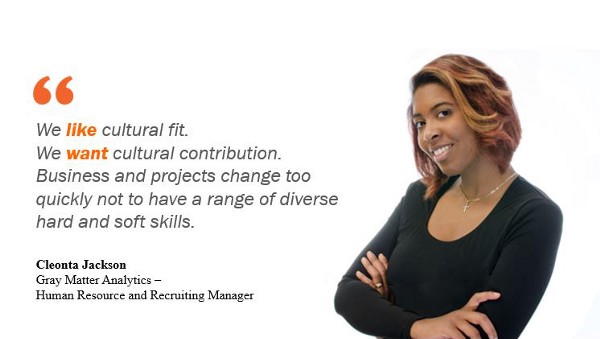3 Ways to Build an Analytics Dream Team

Of the original 12 members of the 1992 U.S. men’s basketball team, 11 are in the NBA Hall of Fame (Christian Laettner never made it).
As they say, there is only one Dream Team.
Unsurprisingly, the more companies characterize themselves as data-driven, the better they perform on objective measures of financial and operational results. As the benefits to big data accumulate, the role of the domain expert is changing. Expertise used to be valued for having answers, now it’s about knowing which questions to ask. This is probably what Pablo Picasso had in mind when he famously said, “Computers are useless. They can only give you answers.”
Here are 3 ways to build your Analytics Dream Team of cross-domain experts.
1.
2016 Is The Year Of The Hybrid Job — Hire for a mix of technology and people skills.
To address the depth and breadth of digital transformation, employees must bring deeper and broader competencies. We used to arrange atoms, now we rearrange data. Big data, for example, is quickly becoming a core driver of success in nearly every business, and across every industry. Success in the 21st — century workplace demands staff that can gather, analyze, and apply data driven insights to their role and the company’s goals more broadly.
“The ability to compile, analyze, and apply big data to everyday business decisions is driving major change. Regardless of function, employees need to be able to effectively communicate what the data means and apply it to big-picture objectives,” says Susan Brennan, associate vice president of university career services at Bentley University.
“But this can’t be done in a silo; collaboration and teamwork are essential.”
2.
Develop knowledge-transfer programs, before it’s too late.
With large numbers of baby boomers approaching retirement, they’ll be taking with them years of valuable institutional knowledge and skills. Hybrid skills in a younger workforce can ease the generational shift. But formal knowledge-transfer programs can help junior employees step into leadership roles more quickly.

Handling generational and digital culture shock is going to take more than savvy social media. Accenture’s Technology Vision 2016 predicts leading companies that develop a people first approach will win in today’s digital economy. “Companies that embrace digital can empower their workforce to continuously learn new skills to do more with technology and generate bigger and better business results,” says Paul Daugherty, Accenture’s chief technology officer.
Digital success means people too. To create fresh ideas, develop cutting-edge products and services, and disrupt the status quo, organizations that develop efficient knowledge transfer methodologies will enjoy a competitive edge.
3.
Office hierarchy is dead — assemble your Dream Team as a “network”.
It took some time, but the traditional office structure is finally dead. A recent Deloitte survey found only 38% of companies are now “functionally organized.”
To increase industrial production in the 1920s and 30s, the function of a firm was largely to reduce transaction costs, particularly information costs. It made sense for a firm to grow until organizational costs offset efficiency gains, especially when transaction costs were a greater concern than organizational costs.
Today’s information economy turns this model on its head. Technology has minimized transaction costs, while organizational costs have gone up. To fully realize the benefits of investment in digital technologies, businesses can unlock creativity through organizational redesign.
Industrial age top-down management hierarchies are slow to innovate and adapt. The modern workplace includes team members with less defined roles, they move laterally from project to project, taking advantage of new technologies to manage challenges arising from sudden shifts in the world economy.
